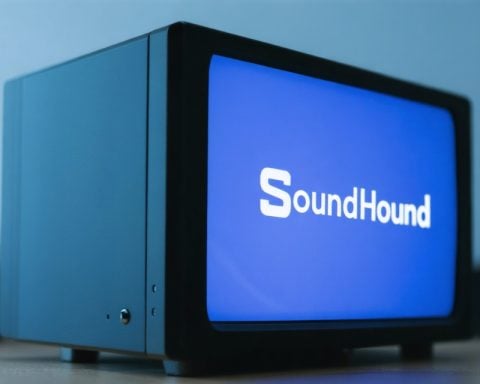- In 2024, Atmus Filtration Technologies Inc achieved impressive financial growth, with revenues reaching $1.67 billion and an EBITDA margin of 19.7%.
- The company has charted an independent course post-separation from Cummins, introducing the advanced NanoNet N3 product portfolio in fuel filtration.
- Atmus faces global economic challenges, including soft market conditions, foreign exchange volatility, and fluctuating input costs, particularly in steel.
- Tariff uncertainties have prompted Atmus to diversify regional manufacturing from China to Mexico.
- Strategic cost-cutting and restructuring efforts in the US and China aim to enhance resilience against economic volatility.
- Forecasting a 2% market expansion in 2025, Atmus focuses on agility and innovation to navigate financial challenges.
Atmus Filtration Technologies Inc has risen steadily in 2024, marking its newfound independence with a strong financial performance. Revenues climbed to $1.67 billion, signifying a robust 2.5% increase, while the EBITDA margin reached an impressive 19.7%, driven by strategic growth moves and innovative product launches. Yet, beneath this success lies the reality of global economic challenges that could shape 2025 into a year of resilience and adaptability for the company.
Emerging from its operational separation from Cummins, Atmus has energetically charted a path towards market leadership. The introduction of the NanoNet N3 product portfolio underscores its strides in technological advancement, strengthening its foothold in fuel filtration. Despite these gains, the company faces a tempest of soft market conditions, especially noticeable in its aftermarket and first-fit segments.
Economic currents aren’t the only factors reshaping Atmus’s journey. The company grapples with foreign exchange volatility and anticipates further headwinds from fluctuating input costs, including steel. Tariff uncertainties add another layer of complexity, prompting Atmus to brace for potential impacts by diversifying regional manufacturing strategies, from China to Mexico.
Amidst restructuring efforts in the US and China, the company pursues strategic cost-cutting initiatives while keeping a keen eye on economic recovery indicators. With a commitment to growth, Atmus aims to capture a projected 2% market expansion in 2025, buoyed by strong aftermarket and first-fit performances.
The narrative for Atmus is clear: in a world of shifting economic sands, the ability to adapt and innovate defines those who thrive. As the company enters 2025, its focus on agility and market responsiveness will be the compass guiding its course through the financial currents ahead.
Atmus Filtration Technologies: How to Navigate Growth and Challenges in 2025
How-To Steps & Life Hacks for Businesses in Filtration Technology
1. Innovate Continuously: As demonstrated by Atmus with the NanoNet N3 product portfolio, continual innovation is essential. Invest in R&D to stay ahead of technological advancements.
2. Diversify Manufacturing Locations: To mitigate the impact of tariffs and exchange rate fluctuations, consider diversifying your manufacturing footprint. Atmus’s move to expand into Mexico is a strategic response to such challenges.
3. Enhance Aftermarket Strategies: Given the importance of aftermarket sales, companies should focus on building strong relationships with customers post-sale to ensure repeat business and brand loyalty.
4. Cost-Cutting Without Compromising Quality: Analyze operations for efficiency improvements, as Atmus is doing in the US and China, to maintain competitiveness without sacrificing product quality.
Real-World Use Cases
– Application in Automotive Industry: Atmus’s fuel filtration technologies are especially critical for the automotive sector, where efficiency and emissions reduction are key drivers.
– Industrial Applications: Heavy machinery and industrial engines rely heavily on filtration technology to minimize wear and extend equipment life.
Market Forecasts & Industry Trends
The filtration technology market is projected to grow steadily, with an expected CAGR of about 4% through 2025. Trends include increased demand for emissions reduction technologies and the growth of electric and hybrid vehicles, which might slightly reduce demand for traditional fuel filtration solutions.
Reviews & Comparisons
Atmus’s NanoNet N3 portfolio is positioned favorably against competitors like Donaldson and Parker Hannifin, known for advanced filtration solutions. The key differentiation lies in Atmus’s focus on innovative proprietary technology and responsive product support.
Controversies & Limitations
– Environmental Concerns: Filtration products can face scrutiny for environmental impact during disposal. It’s crucial for companies to invest in sustainable solutions.
– Market Concentration Risks: Heavy reliance on certain geographic regions or sectors could become problematic if those areas face economic challenges.
Features, Specs & Pricing
Atmus’s NanoNet N3 products are engineered for maximum efficiency and longevity, featuring advanced materials and design techniques. Pricing aligns with industry standards, aiming to balance between cost and value.
Security & Sustainability
– Data Security: Atmus and industry peers should implement stringent cybersecurity practices to protect sensitive manufacturing and design data.
– Sustainability Initiatives: Focus on reducing carbon footprint in production processes and promoting recyclable and bio-friendly filters.
Insights & Predictions
1. Geopolitical Stability Will Be Key: Tariff policies and international relations will significantly influence market dynamics.
2. Technological Integrations Will Proliferate: Integration with IoT for smart filters will be an exciting development area, providing real-time monitoring and maintenance alerts.
Tutorials & Compatibility
– Installation Guides: Providing detailed, easy-to-follow installation instructions can minimize user error and ensure optimal performance.
– Compatibility Charts: Ensure clear documentation of which filters are suitable for various engine models and applications.
Pros & Cons Overview
Pros:
– Strong innovation pipeline
– Diverse manufacturing strategy
– Robust financial health
Cons:
– Vulnerable to external economic conditions
– High initial investment needs for R&D
– Dependence on fluctuating material costs
Actionable Recommendations
1. Leverage Analytics: Use predictive analytics to foresee market shifts and adapt swiftly.
2. Customer-Centric Approach: Engage with your customer base to gather feedback and anticipate market demands early.
3. Explore New Markets: Diversify product applications to enter emerging markets with less competition.
For further details on the filtration industry’s future, visit Filtration Industry.
By implementing these strategies, businesses like Atmus can navigate the challenges and opportunities of 2025 and beyond effectively.



















